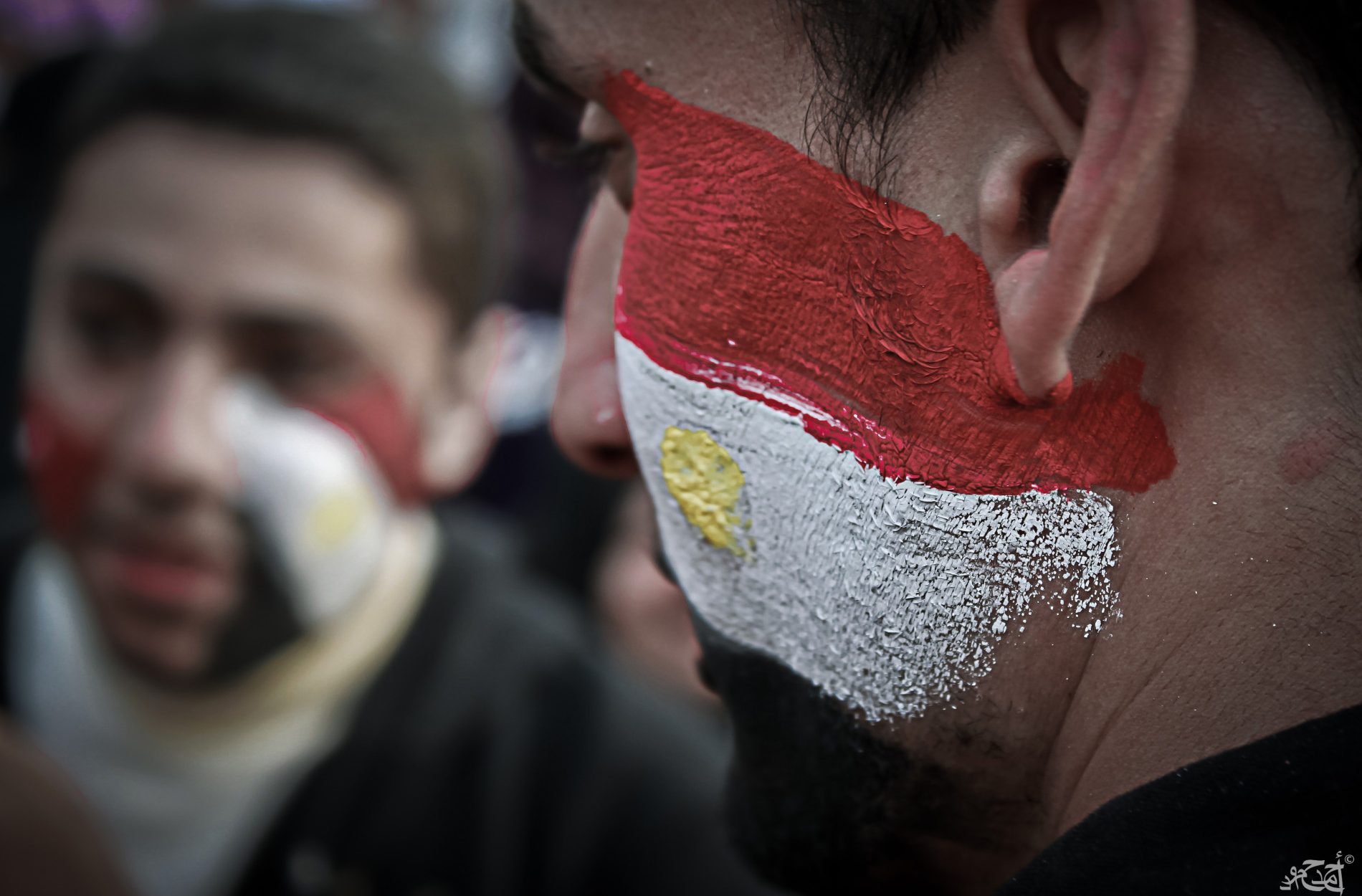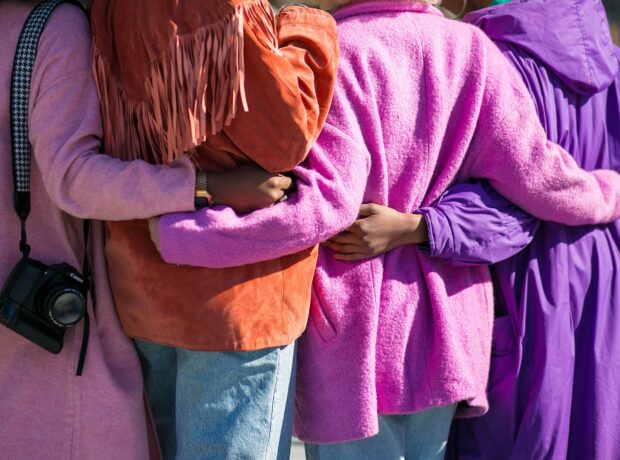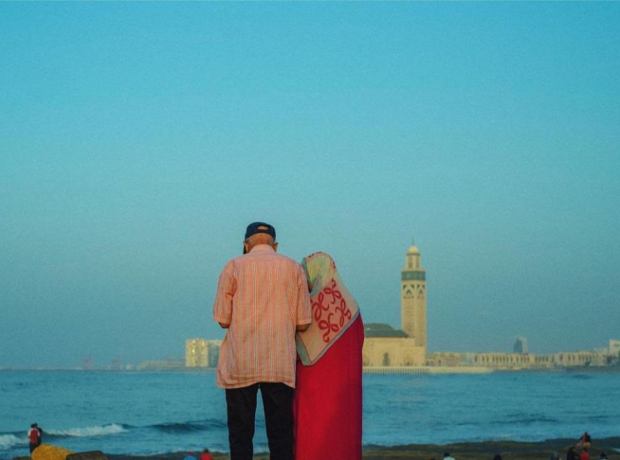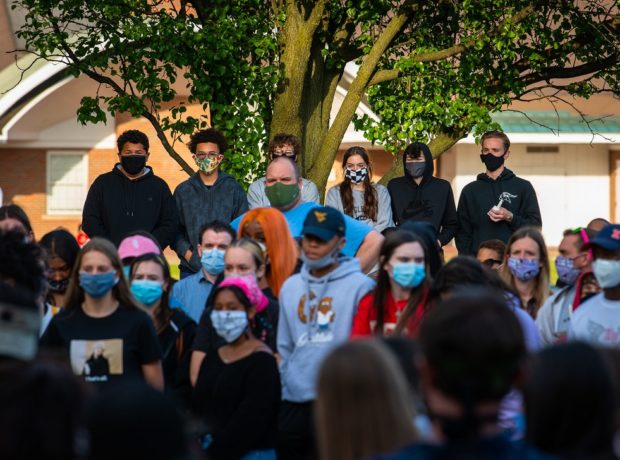In the midst of Egypt’s recent revolutions, protests and violence, Samuel Holder describes how he became involved in creating a new course about the role of creative expression in the face of oppression. He tells of initial hostility to the course, but also his hopes for engaging his students more fully in the future.
After the 25th of January Revolution in Egypt in 2011, the American University in Cairo (AUC) was abuzz with activity. Instructors created syllabi outlining the historic struggle of civil society in Egypt, students organized with staff to pressure the administration and effect change, and the culture of the campus shifted from what was, at times, an arguably elitist ideological oasis, far from the fervor in Tahrir Square, to a more engaged community of enthusiasm and hope.
However, the mood and political dynamics in the country soon shifted. Hysteria and hope soon gave way to a familiar despair as the Supreme Council of the Armed Forces, charged with leading the post-Revolution transition, arrested dissidents en masse and tried them in ad hoc military courts. The election of Mohammed Morsi brought enormous vindication for the beleaguered and ostracized Muslim Brotherhood, and brought seeming legitimacy to the nascent democracy in Egypt. However, their divisive and dangerous rhetoric, coupled with incompetent governance from, arguably, a puppet president, once again led to mass demonstrations, huge loss of life, and the ascension of the new Egyptian strongman, Abdel Fatah el-Sisi in the summer of 2013.
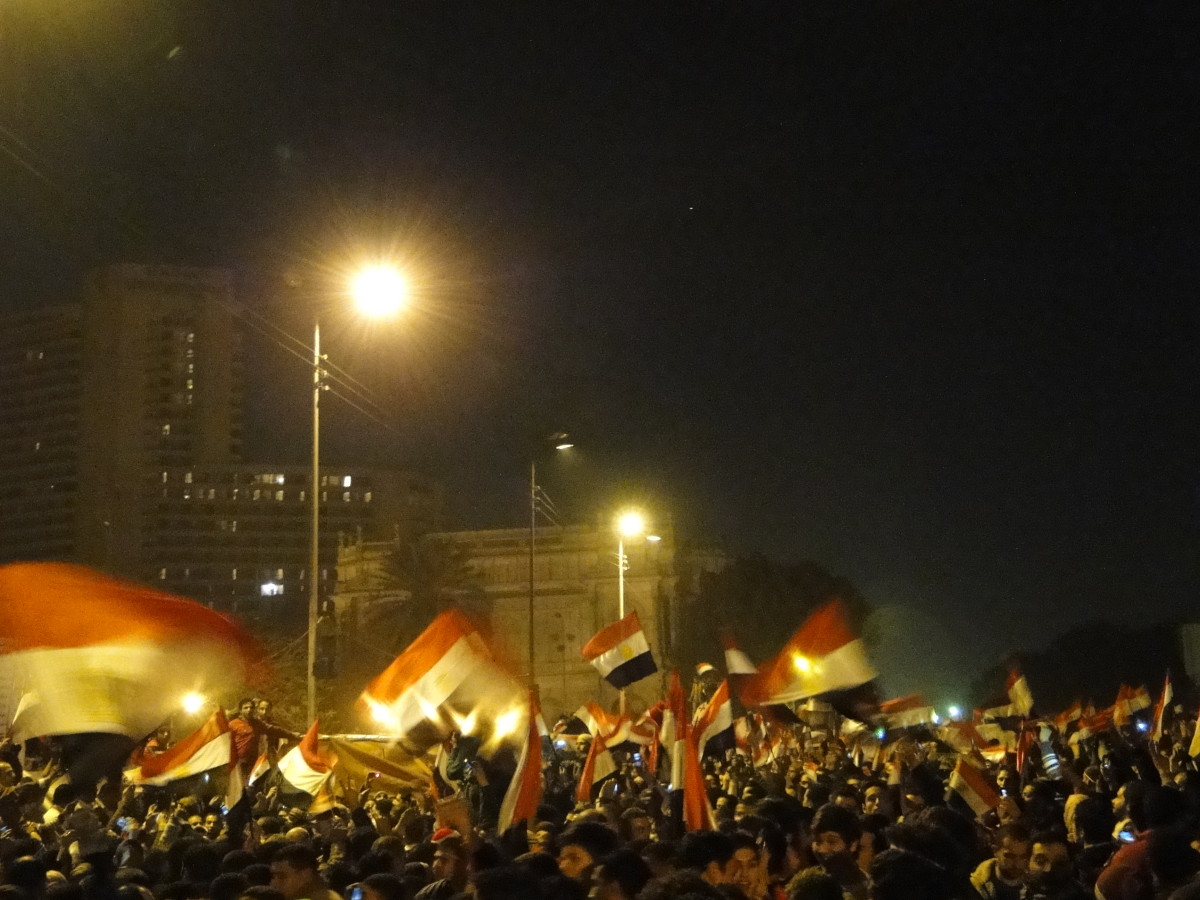
Photo by Ramy Raoof
Thus, after experiencing the emotionally draining experience of chaotic transition after transition, and the relentless hangover of demonstration and bloodshed, the AUC community – and Egypt as a whole – began to shed its addiction to resistance and pressure.
In an effort to revive the spirit of this historic moment in Egypt, myself and two other instructors from the Department of Rhetoric and Composition (Iman Hamam and Andrea Young) constructed a new course together – designed for the nascent Freshman Year Program – entitled ‘Creative Expressions of Resistance’. The hope for the course, as envisioned by lead designer, Andrea Young, was to investigate the role of the artist in the face of oppression. Instead of immersing students, once again, in the complex and often sociopathic machinations of Egypt’s transition to a more democratic state, this course was instead relying on the artistic inspiration that the Revolution gave birth to, re-awakening the passion for creative expressions against oppression.
We were making final preparations to deliver the course. Then, on July 3, 2013, President Mohammad Morsi was removed from power in a military-led, and civilian-backed effort. A grassroots movement, known as “Tamarod,” or “rebellion,” was launched in late Spring 2013. The primary purpose of this youth-led group was to gain signatures in support of the ousting of the Brotherhood and its leader, Mohammed Morsi. Allegations of collusion between Tamarod and former regime officials as well as the Egyptian military were rampant, but the effort was a wild success, gaining millions of signatures and securing a rising wave of resistance to Morsi’s government.
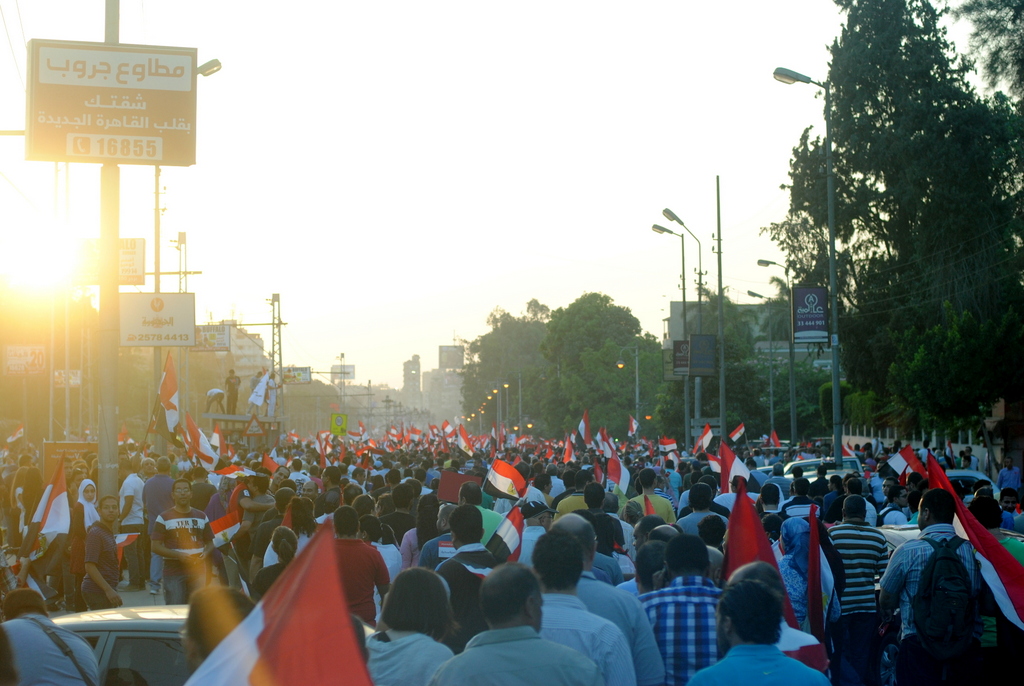
Anti-Morsi protest march in Cairo. Photo by Lilian Wagdy
While enjoying massive support, the popular demonstrations against Morsi and his government quickly turned violent as the Brotherhood infrastructure – well-established, entrenched and highly disciplined – took action against the resistance. What followed was a bloody, unsettling and fiercely divisive summer, culminating in the forcible removal (and imprisonment) of the democratically elected Morsi, and a deep, fervent desire to quell the unstable and insecure country. The fallout from this deposing led to a firestorm of media attention labeling the action a coup d’état, and an equally virulent response from local media – and many Egyptians – hailing the ousting and condemning the foreign press and any who would dare not label the June 30th movement (and all involved, including Tamarod) a new Revolution.
Popular demonstrations against Morsi quickly turned violent, culminating in a deep, fervent desire to quell the unstable and insecure country
Our new class – created many months before this ousting and designed to re-engage on the resistance culture in Egypt – was scheduled to begin a mere two months later.
The violence that followed the ousting of Morsi and the brutal marginalization of the once-powerful Muslim Brotherhood culminated with the horrific Square clearances of Raba’a and Nahda on August 14, 2013. Casualty estimates vary. Human Rights Watch claims that 1,150 people lost their lives. The Egyptian Health Ministry, on August 16, puts the death toll at 638. The Muslim Brotherhood claims 2,600 lives were lost in Raba’a alone. One things is clear: Egypt suffered enormous loss of life in one bloody day.
As a civilian, I was once again preparing for an uncertain political climate. However, as an instructor, I was eager to commence this new course and engage critically and thoughtfully with this new transitional government, the dramatic loss of life and its significance to Egypt, and the path ahead – in all its messy glory. What I was not prepared for – being blinded by the bright and brilliant culture of passionate critical dialogue of the previous two years – was an almost immediate concretization of ‘State narrative’; a narrative so thick and hard, even the compassionate and unique gaze of the classroom was incapable of confronting it.
I began our course in Fall 2013 with an article by an Egyptian journalist named Omar Hamilton. The piece, titled “Everything Was Possible”, spoke to the tragedy of Raba’a and Nahda, and, potentially, the success of a counterrevolution. In the article, Hamilton writes: “I mourn the dead and I despise those killing them. I mourn the dead and I despise those sending them to their deaths. I mourn the dead and I despise those that excuse their murder. How did it come to this? How did we get here? What is this place?”
In his brave and honest recounting of the bloodshed, he articulates the pain and helplessness of some revolutionaries. But not all. While most of those who fought and demonstrated with ferocity in 2011 mourned the ascension of Abdel Fatah el-Sisi, some welcomed his rise as a return to stability and economic prosperity – signaling an exhaustion that ran deeper than political convictions.
Most of those who demonstrated in 2011 mourned the ascension of Sisi, but some welcomed his rise as a return to stability
The class also worked to incorporate some revolutionaries into the course. Bahia Shahab, an Assistant Professor of Design at the American University in Cairo, guest lectured in the course, offering a unique perspective on the graffiti culture in Egypt, specifically during the 18-day uprising in 2011. She also showcased her recent project: a city-wide graffiti installation all centered around the word “La”, or “No”, in Arabic. As a stylized piece of Arabic script, culturally ingrained in Egyptian youth, this project captured the moment of the time and harnessed the symbolic power of the word NO as a piece of creative expression as a response to oppression.
My students in Fall 2013 came in all political stripes. However, just two months after the ousting of Morsi, the State Story was already seeping into the classroom and creating hostility amidst discussions and forcing clampdowns on critical thinking. There were moments of lucidity and compassion. But critiques of the deposition of Morsi, the clearances of Raba’a and the imminent ascendance of now-President Abdel Fatah al Sisi, were, at best, dismissed as false, and, at worst, met with a dark ferocity I had not yet experienced at AUC.
The course, in its present form, was lost.
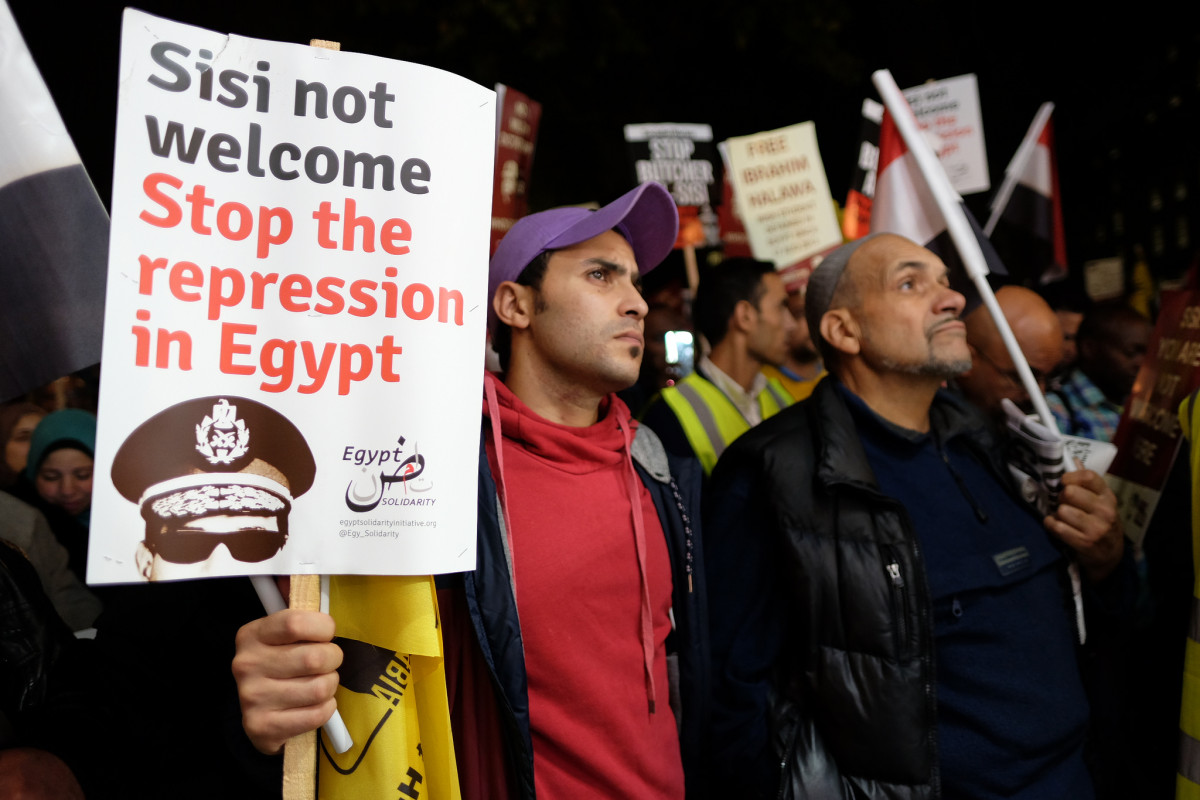
Photo by Allsdare Hickson
Over the next few semesters, I changed tack and introduced new contexts and historical examples of creative responses to oppression. My students thoughtfully engaged with American responses to the Vietnam War and the Civil Rights Movement (both in the late 50s and 60s, as well as more contemporary manifestations, like Ferguson, Missouri in 2014). They investigated the challenges facing an entrenched and persistent resistance in Palestine, and they relished in the hope of resistance when reviewing humorous responses to oppression globally. My hope was to reveal the sources of dark repression in other contexts and subtly hint at the similarities between, for example, State and Police Violence in the United States and the political and violent crackdowns against activists, journalists and artists in Egypt. This osmotic strategy was only partially effective.
The status of Egyptian resistance is back on the docket this semester. This year’s freshman students were in their early teens during the January 25th Revolution. What I am discovering is that their perspective is slightly changed – they were more under the thumb of their parents at the time. After the Revolution, they often had to play catch-up (as very young adults), intellectually, to understand the genuine struggle of the Egyptian Revolutionaries. And, as developing students, they also took a unique path to their informed opinion about both the Revolution and the current Egyptian regime. Steeped in this richer environment, I’m moving forward with a critical look at Egypt.
Time will tell how students engage with contemporary and creative responses to oppression in Egypt. But I’m beginning to once again feel hope bleeding through. And to abandon or ignore that hope in the classroom would be tragic indeed.
Banner photo by Ahmad Hammoud
